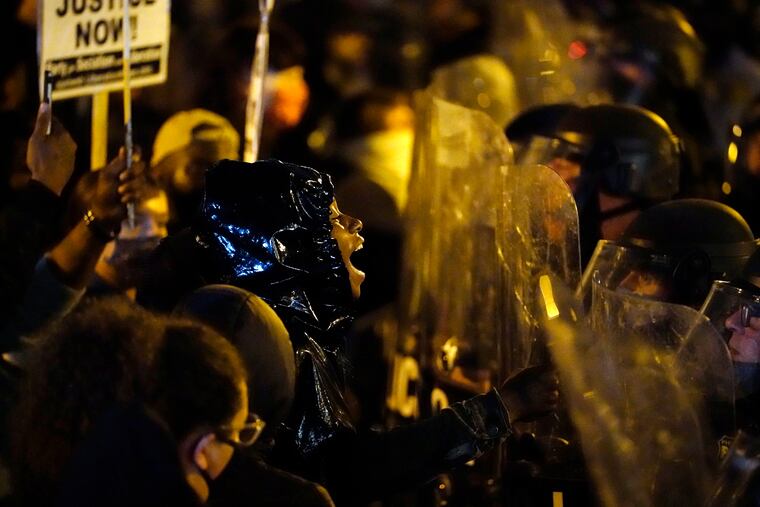I was a police chief. Here’s one way I would reform police in Philly and beyond. | Opinion
Police academy recruits should be unarmed in the first phase of their training because it would teach them to reflexively open the distance with people in crisis, use cover, and de-escalate.

The killing of Walter Wallace Jr. by police shows just how much and how little has changed in the last year in both Philadelphia and across the nation.
Last November, as a Vermont chief of police and a 19-year New York Police Department veteran, I published an op-ed in the New York Times where I argued police shouldn’t be so quick to shoot people in crisis armed with knives. I argued that police academy recruits should be unarmed in the first phase of their training because it would teach them to reflexively open the distance with people in crisis, use cover, and de-escalate. Officers would learn not to yell stress-inducing, escalatory commands because they wouldn’t have the lethal weapons that give these orders force. They could then be trained on firearms as life insurance, not problem-solving tools.
Police around the country dismissed these arguments as dangerous ones that pandered to policing’s critics. Countless police academies still show recruits video after video of officers being attacked and killed under every circumstance. Many still teach recruits the fallacious “21-foot rule,” that anyone with a knife who gets within 21 feet of them can stab officers before they have time to react. The statewide police academy in Vermont had a scenario where it punched recruits hard enough in the head to knock them unconscious as a lesson for taking their eyes off a hitchhiker for a moment. It had to be sued by an injured recruit to stop giving its trainees brain trauma.
» READ MORE: Reimagining policing: 14 ways to change a broken system | Opinion
The day my op-ed came out, I had an interview with Philadelphia city officials. They were looking for a new police commissioner. Danielle Outlaw got the position, which she richly deserved, but my discussions with City Hall were illuminating. They had a genuine interest in reducing use of force by police but were concerned by a lack of progress. I told them that to change an agency the size of the Philadelphia Police Department would take a decade, it would require more racial and gender diversity, and it had to be doggedly sustained through the inevitable changes in administration.
I know from experience that changing a police department culture is a tall order.
In 2016, my police officers in Burlington, Vt., killed a schizophrenic man armed with two knives. They shot him when Tasers failed to safely end a four-hour standoff. The painful lessons we learned from that led us to help the Police Executive Research Forum develop and pilot a pathbreaking de-escalation curriculum designed for armed people in crisis. It incorporates the distance, cover, de-escalation, and communication that reduce the need for split-second decisions that can lead to gunfire.
Last week, the International Association of Chiefs of Police announced that a randomized controlled trial of the program in a major metropolitan police department showed it works to reduce the use of force while keeping officers safe. Yet, most of the nation’s 17,000 police departments haven’t adopted anything that resembles it.
» READ MORE: Reforming police requires action, not commissions | Opinion
Change in Philadelphia will require its police to get over the idea that a person in crisis with a knife is a death sentence unless they open fire. In England and Wales, where knives are the norm and beat cops don’t have guns, police rarely shoot and kill more than five people a year, compared with 1,000 in the U.S.
The death of Walter Wallace Jr. is proof of how wide the gap has grown between what U.S. police are trained to do and the restraint the public expects of them. The tactics are there, the training has been developed, and for America’s police leaders to ignore this historic opportunity will result in nothing but more unnecessary killing.
Brandon del Pozo is a drug policy researcher at Miriam Hospital/Brown University in Providence, R.I. He spent 19 years in the New York Police Department and four as the chief of police of Burlington, Vt.